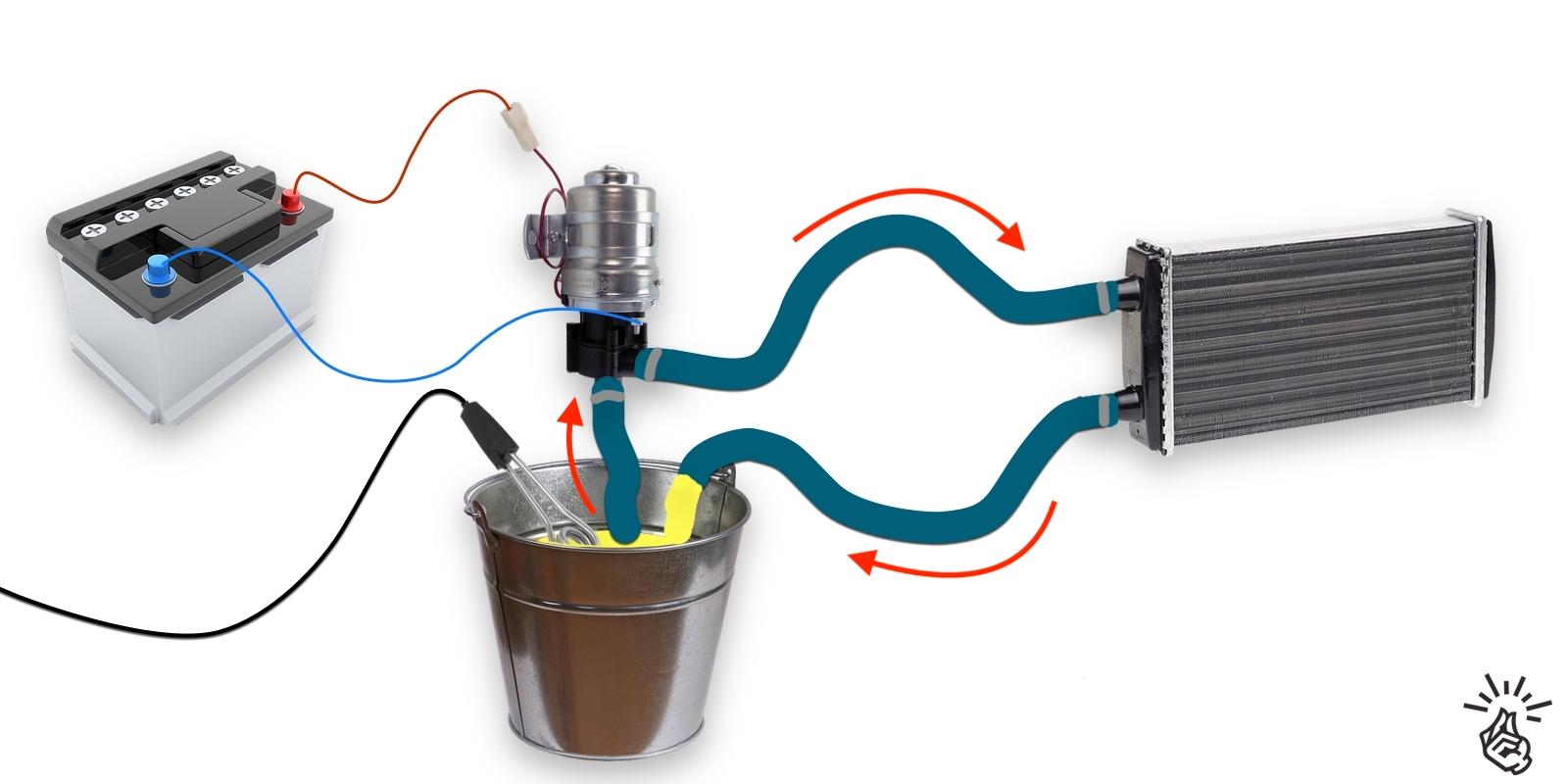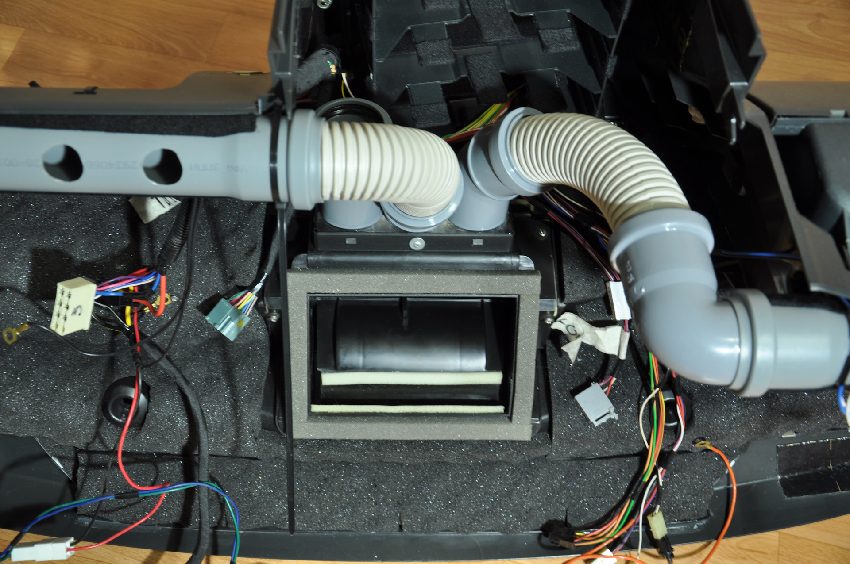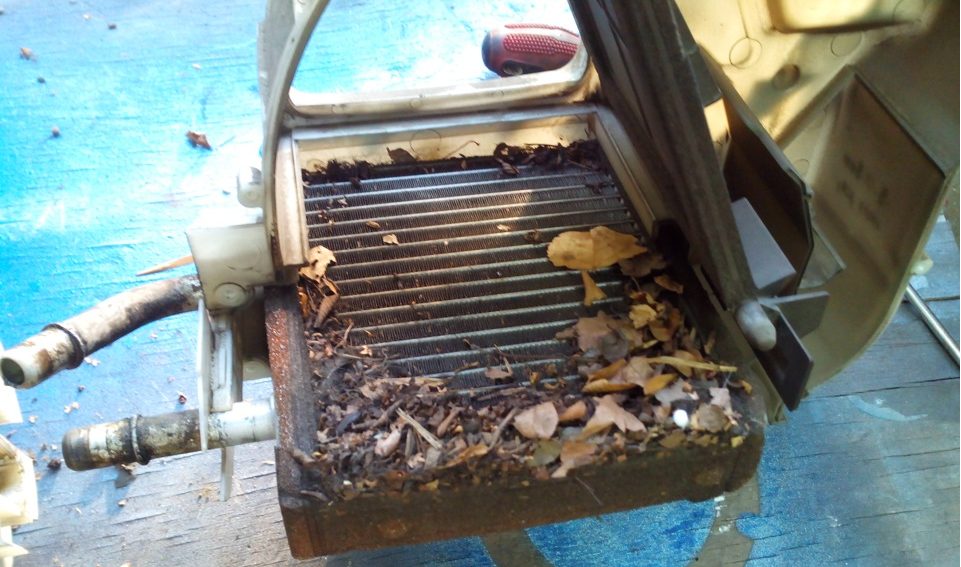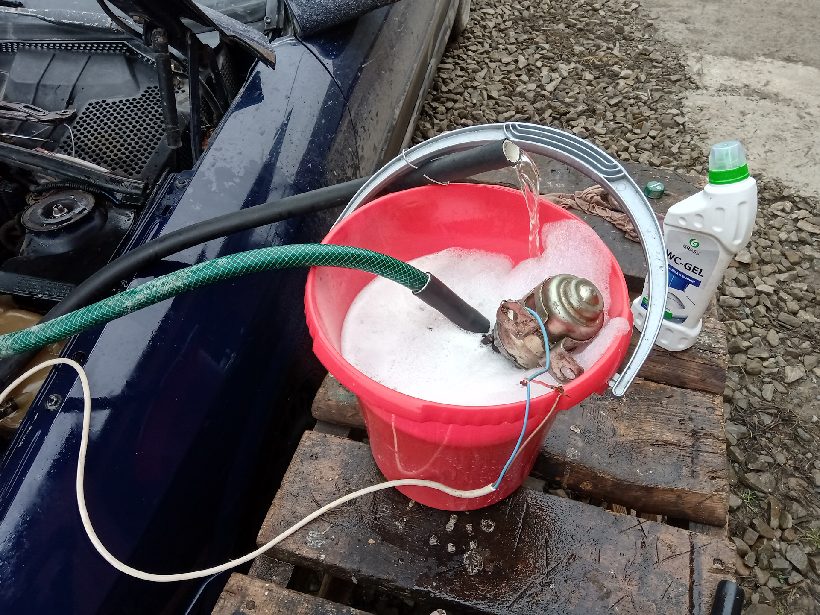
How and how to flush the stove radiator without removing it from the car
Content
When the efficiency of the heater drops and driving in a car is uncomfortable during winter frosts, flushing the car's stove without removing (dismantling) the radiator is one of the ways to restore the normal operation of the interior heater at home. The disadvantage of this method is that it is effective, if the reason for the decrease in the efficiency of the stove is the appearance of deposits on the walls of the radiator, when the heater works worse due to something else, this method will be useless.
When the efficiency of the heater drops and driving in a car is uncomfortable during winter frosts, flushing the car's stove without removing (dismantling) the radiator is one of the ways to restore the normal operation of the interior heater at home. The disadvantage of this method is that it is effective, if the reason for the decrease in the efficiency of the stove is the appearance of deposits on the walls of the radiator, when the heater works worse due to something else, this method will be useless.
How the stove is arranged and works in the car
In modern cars equipped with an internal combustion engine (ICE), the stove is part of the engine cooling system, receiving excess heat from it and transferring it to the passenger compartment, while the coolant is antifreeze (coolant, coolant) circulating throughout the system. While the engine is cold, that is, the temperature is below 82-89 degrees, at which the thermostat is triggered, the entire coolant flow goes in a small circle, that is, through the radiator (heat exchanger) of the interior heater, so you can use the stove after 3-5 minutes of engine operation. When the temperature exceeds this value, the thermostat opens and most of the coolant begins to move in a large circle, that is, through the main radiator.
Despite the fact that after warming up the automobile internal combustion engine, the main flow of coolant goes through the cooling radiator, circulation in a small circle is enough to heat the passenger compartment. The main condition for achieving such efficiency is the absence of scale inside the radiator and dirt outside, but if the heat exchanger is overgrown with scale or covered with dirt on the outside, the stove will not be able to heat the air in the cabin normally. In addition, the movement of the air mass through the radiator is provided by a fan, but, in motion, the oncoming air flow copes well with this task, and special curtains, at the command of the driver, change its direction, turning the flow partially or completely bypassing the heat exchanger.

How does a car oven work?
More detailed information about the operation of the engine cooling and interior heating systems can be found here (How the stove works).
What pollutes the cooling system
In a serviceable engine, antifreeze is separated from the oil and the combustible air-fuel mixture by the metal from which the cylinder block (BC) and cylinder head (Cylinder Head) are made, as well as by a gasket installed between them. If a high-quality coolant is flooded, then it does not interact with metal, or with small or fuel combustion products, however, low-quality liquid reacts with aluminum from which the cylinder head is made, which leads to the appearance of red mucus in the antifreeze.
If the cylinder head gasket is damaged, then oil and the remains of an unburned air-fuel mixture enter the coolant, which causes the antifreeze to thicken and clog the thin channels in the radiators. Another cause of cooling system contamination is the mixing of incompatible antifreezes. If, during the replacement of the coolant, the old liquid was not completely drained, then a new one was filled in, but incompatible with the old one, then the formation of mucus and slag will begin in the system, which will clog the channels. When such contaminants enter the radiator, they gradually reduce its throughput, which reduces the cooling efficiency in the main heat exchanger and air heating in the stove heat exchanger.

Car oven pollution
How to clean the oven
Before taking any action, establish the exact reason why the efficiency of the stove has decreased. Remember: flushing the car's stove without removing it is effective only when deposits in the stove radiator are the cause of the decrease in the efficiency of the heater. In all other cases, you will have to disassemble the stove and repair or replace defective parts. If there are no defects in the stove, and an emulsion is present in the expansion tank or the liquid has become thicker than it should be, then proceed to flushing.
Inexperienced drivers, considering the removal of the radiator to be hard and useless work, proceed to such washing without establishing the cause of the malfunction and without determining the material from which the heat exchanger is made. Most often, the result of their actions is a deterioration in the operation of the engine cooling system, followed by boiling and deformation of the cylinder head, after which the cost of repairing the power unit exceeds the cost of purchasing a contract ICE.
Equipment and materials
The main material for flushing a car cooling system are:
- caustic soda, including the "Mole" blockage remover;
- acetic/citric acid or whey.

Means for washing the car stove
To choose the right material, consider what the main and heating radiators are made of. If both of them are made of aluminum, then use only acids, if they are made of copper, then use only soda. If one radiator is copper, the second is brass (copper), then neither alkalis nor acids are suitable, because in any case one of the radiators will suffer.
The Restart universal flush is advertised on the Internet, assuring that it removes blockages well and does not damage the radiator, but most of the positive reviews about it are paid, and those cases when it really helped occurred where the crust had not yet formed on the walls of the channels . Therefore, there are no real means for cleaning the cooling system, the active substance in which are not alkalis or acids, does not exist.
In addition, for washing at home, you will need:
- clean water, can be from the water supply;
- tank for draining the coolant;
- capacity for preparation of washing solution;
- new antifreeze;
- wrenches, size 10–14 mm;
- watering can for pouring new antifreeze.
Remember, if the water from the tap is chlorinated, then it must be defended for several days before pouring. During this time, the chlorine will come out and the water will not pose a threat to the car.
Procedure
To flush the radiator without dismantling, proceed as follows:
- If your car has a tap in front of the heater, open it.
- Drain the antifreeze from the large and small circles. To do this, unscrew the drain plugs on the engine block and the cooling radiator. Collect the flowing liquid in a container, do not spill it on the ground.
- Tighten the plugs.
- Fill with clean water until the system is full.
- Start the engine, wait for the cooling fan to turn on.
- Raise the speed to a third or a quarter of the maximum allowable (not from the red zone) and let the motor run in this mode for 5-10 minutes.
- Stop the engine, wait for it to cool down.
- Drain the dirty water and rinse again.
- After the second rinsing with water, make a solution of acid or alkali with a strength of 3-5%, that is, 10-150 grams of powder will be required for 250 liters of water. If you use vinegar concentrate (70%), then it will take 0,5–1 liter. Pour milk whey without diluting with water.
- After filling the system, start the engine and monitor the level of the solution in the expansion tank, add a new solution as the air plug comes out.
- Raise the engine speed to a quarter of the maximum and leave it for 1-3 hours.
- Shut off the engine and, after waiting for it to cool, drain the mixture.
- Rinse twice with water as described above.
- Fill in water for the third time and warm up the engine, check the operation of the stove. If its effectiveness has not increased, repeat the flush with the mixture.
- After a final flush with clean water, fill in new antifreeze and remove air pockets.

car oven cleaning
Conclusion
Flushing the car stove without removing it restores the operation of the interior heater with slight contamination of the cooling system and removes debris from the heat exchanger that appeared due to the exhaustion of the antifreeze resource or the ingress of foreign substances into it. This method of washing the stove is not suitable for severe contamination of the engine cooling system and interior heating, because in order to fully remove all debris, you need to remove the heat exchanger.

